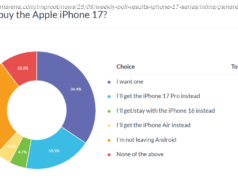San Francisco, Oakland and San Jose downtowns face an economic doom loop
On a recent gloomy afternoon in downtown San Francisco, a handful of tourists waiting to board the city’s famous cable cars watched paramedics strap a barefoot man, moaning and writhing in the throes of an apparent mental health crisis, onto a gurney. As he was loaded into a flashing ambulance, another man frantically shouted obscenities toward police officers at the scene.
Just across the street, Amy Hahn was finishing dress shopping at the Nordstrom store in the Westfield mall. She planned to make a beeline to the nearest BART station. “I am wary of being out in that area,” said Hahn, 26. “I like to minimize that.”
Nordstrom confirmed last week it plans to close the flagship store this summer, along with the nearby Nordstrom Rack — two of the most prominent department stores in the heart of the city. The company cited the changing “dynamics” of downtown, a thinly veiled reference to the perception that crime and homelessness are out of control.
Police data may show otherwise — violent crime has actually fallen in San Francisco in recent years, though property crimes have spiked. And unlike most of the rest of the Bay Area, the city’s homeless population dipped slightly in 2022, according to the latest count. Still, there’s no doubt that San Francisco’s downtown is in crisis.
It’s not the only one. All three of the Bay Area’s largest cities are staring down huge setbacks to their efforts to revitalize urban cores hollowed out by a once-in-a-generation pandemic.
Last month, the Oakland A’s announced the team was decamping for Las Vegas, throwing into flux the city’s plans to redevelop Howard Terminal at the Port of Oakland. The team is leaving behind a $12 billion proposal for a gleaming waterfront stadium with new housing and retail at the site. In San Jose, Google recently announced it was reassessing the timeline for its sprawling Downtown West project, which city officials hope will add homes, shopping and office space for thousands of workers.
Factors cited in the decline of these Bay Area downtowns are numerous: crime, homelessness, income inequality, remote work, online shopping, housing shortages and poor transit alternatives. As the region emerges from the pandemic, an existential question has emerged: Are these challenges the beginning of a “doom loop” that effectively transforms downtowns into ghost towns? Or will the Bay reimagine its relationship with its city centers?
In San Francisco, officials concede a string of high-profile violent attacks, pockets of open-air drug dealing and other safety and quality of life concerns have hampered the city’s recovery after thousands of workers emptied out of downtown offices.
“Public safety is the number one issue I hear about from residents and small businesses every day,” Mayor London Breed said when announcing a measure to increase police overtime in March.






